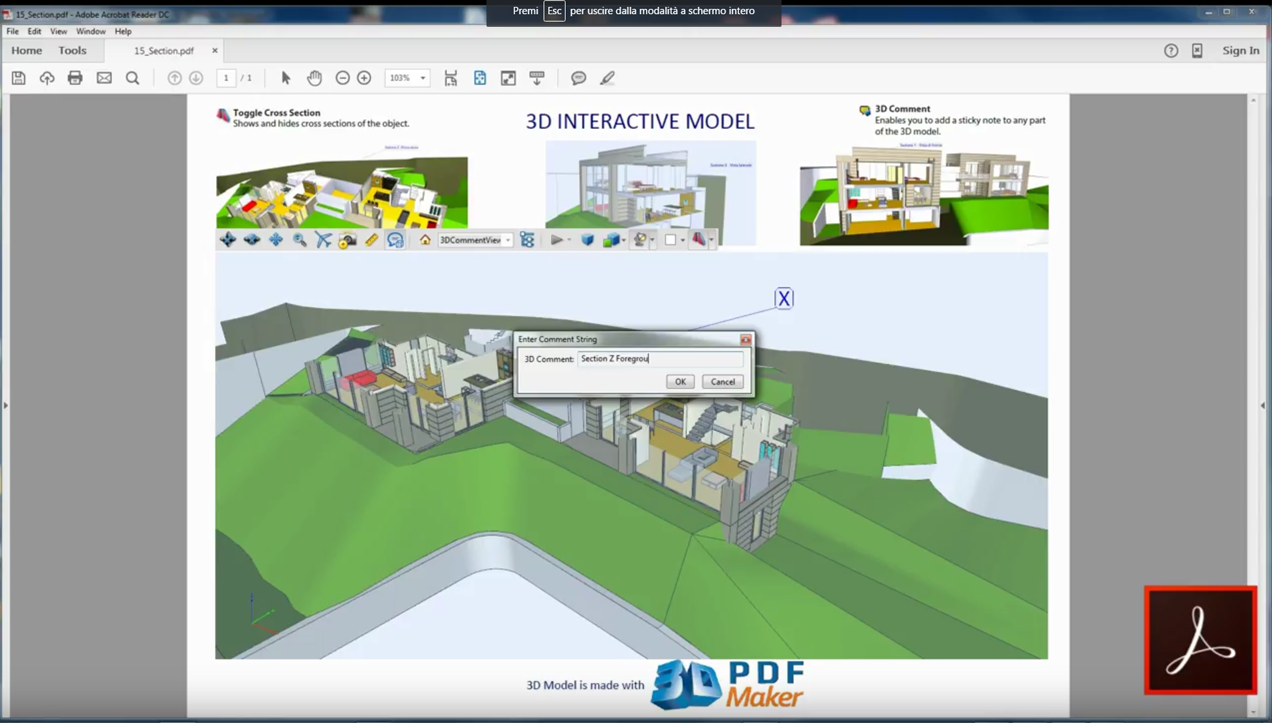

This means you end up with a blurry texture if the initial resolution was higher. Besides the lighting and artwork format options, there is a quite important “tiling” option that helps providing higher resolution artwork in Adobe Reader.Īccording to our tests, Adobe Reader limits artwork resolution to about 2048x2048 to match the low–quality hardware. Export Optionsīoth Boxshot and Origami share the same exporting engine, so the 3D PDF properties are the same. Also notice the 3D tool bar that appears.Exactly as with Boxshot, you can configure export options in application settings panel. There are some neat options to play around with).ĥ.Ĝlick on your 3D object to interact with it. Select OK (You may want to check out the “Advanced” options by clicking on the Show Advanced Options check box. The U3D file can now be published to PDF.ģ.ěrowse to the U3D file you saved earlierĤ.Ěn Insert 3D dialogue box will open. The steps above exported the Photoshop layer to a U3D file. Make sure that JPEG is selected from the Texture Format dropdown The 3D Export Options dialogue box will open.Ħ. Name the file and select U3D from the Format dropdown menuĥ. If you got one of the latest versions Photoshop then you can export your SU model to Google Earth File (.kHz) and then import it to Photoshop and follow the instructions below.ģ. Has anyone else encountered similar problems? Are these problems surmountable? Do other 3D PDF exporters solve these issues? When enabled in Acrobat Pro, measure options show up on the Reader toolbar and in the drop-down 's like measure is not 'fully' enabled when done in the SimLab export.Ģb) in reader 9.5.1, the measure mode cursor is a circle with a line through it - the "Unavailable" mouse cursor, and it often obscures the inferred measuring point.
#3d pdf creator manual#
Regardless, Reader X does have an additional option for units scale and I can set 0.0254 units = 1 in and then Reader X will show measurements in inches, but this requires manual intervention each time and is not available in earlier (and still considered current) versions of Adobe Reader.Ģ) Acrobat Reader also seems to be buggy between versions with the measure enable Ģa) both Reader 9.5 and Reader X react a little differently when measure is enabled by the SimLab export configuration vs when measure/analysis is enabled via Acrobat Pro and then the file opened in Reader. ġa) Most of our machines have Reader 9.5.1 because Reader X (10) implemented many significant UI changes that really aren't so slick (as short-sighted as MicroSoft suddenly moving to the ribbon interface). There are also some buggy problems using Acrobat Reader and I'm not sure whether they are on the SimLab side or the Adobe Acrobat Reader side:ġ) Regardless of what units I draw the model in and what units I set Acrobat Reader to use, the Reader measurements always display in meters. The SimLab 2.4 pluggin exports only 2D plane 3D geometry it does NOT export points, lines, guides, text, nor dimension entities - which makes it practically impossible to create a fully commented/annotated 3D model in PDF. However, we've run into a number of significant 'gothcha' problems with this - at least with the SimLab 2.4 pluggin. I thought 3D PDF from SketchUp would be a great way to simplify drawing output and give contract manufacturers a way to view commented, 3D part designs.

Has anyone got experience with the SimLab or other 3D PDF conversion/exporting?


 0 kommentar(er)
0 kommentar(er)
